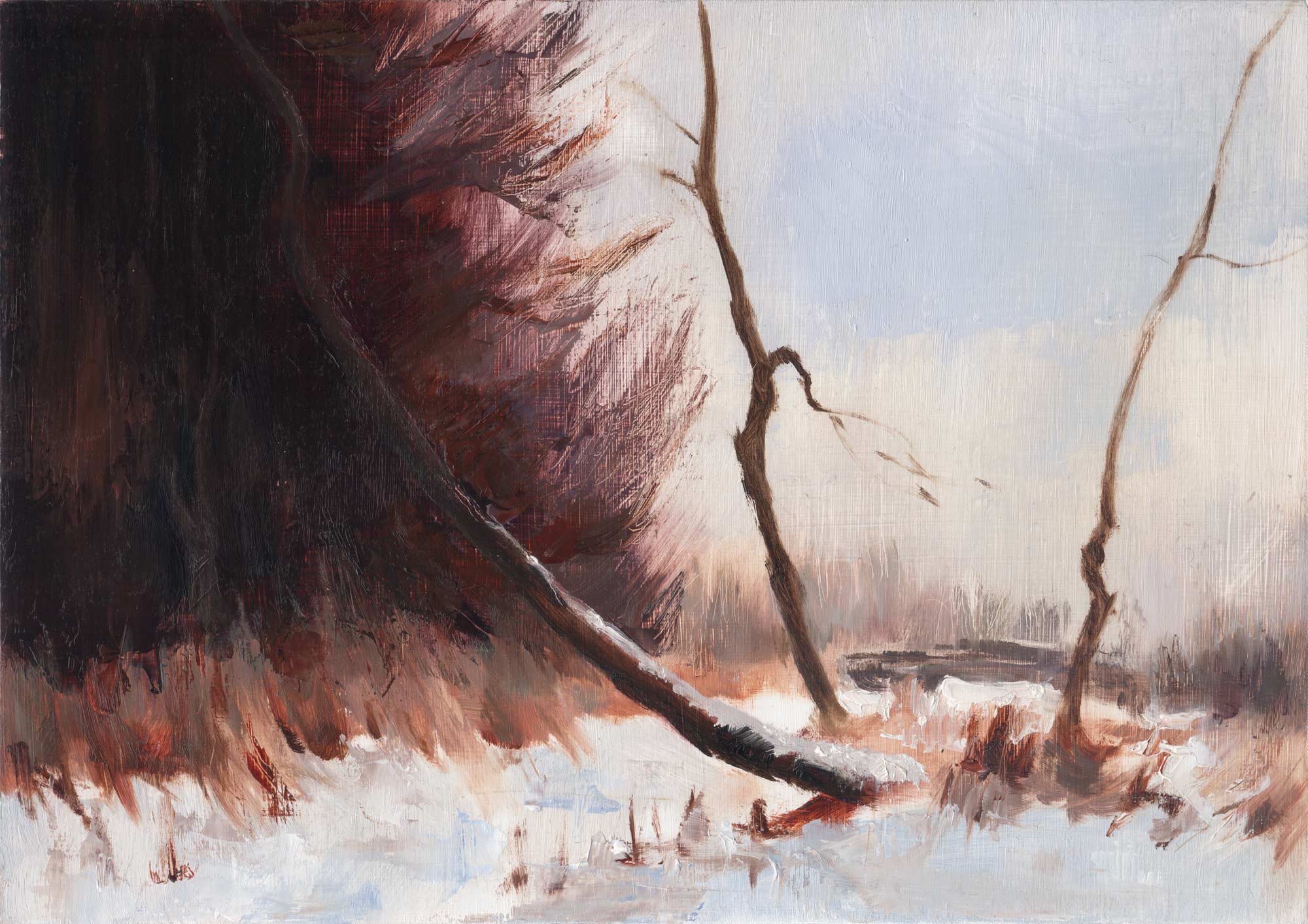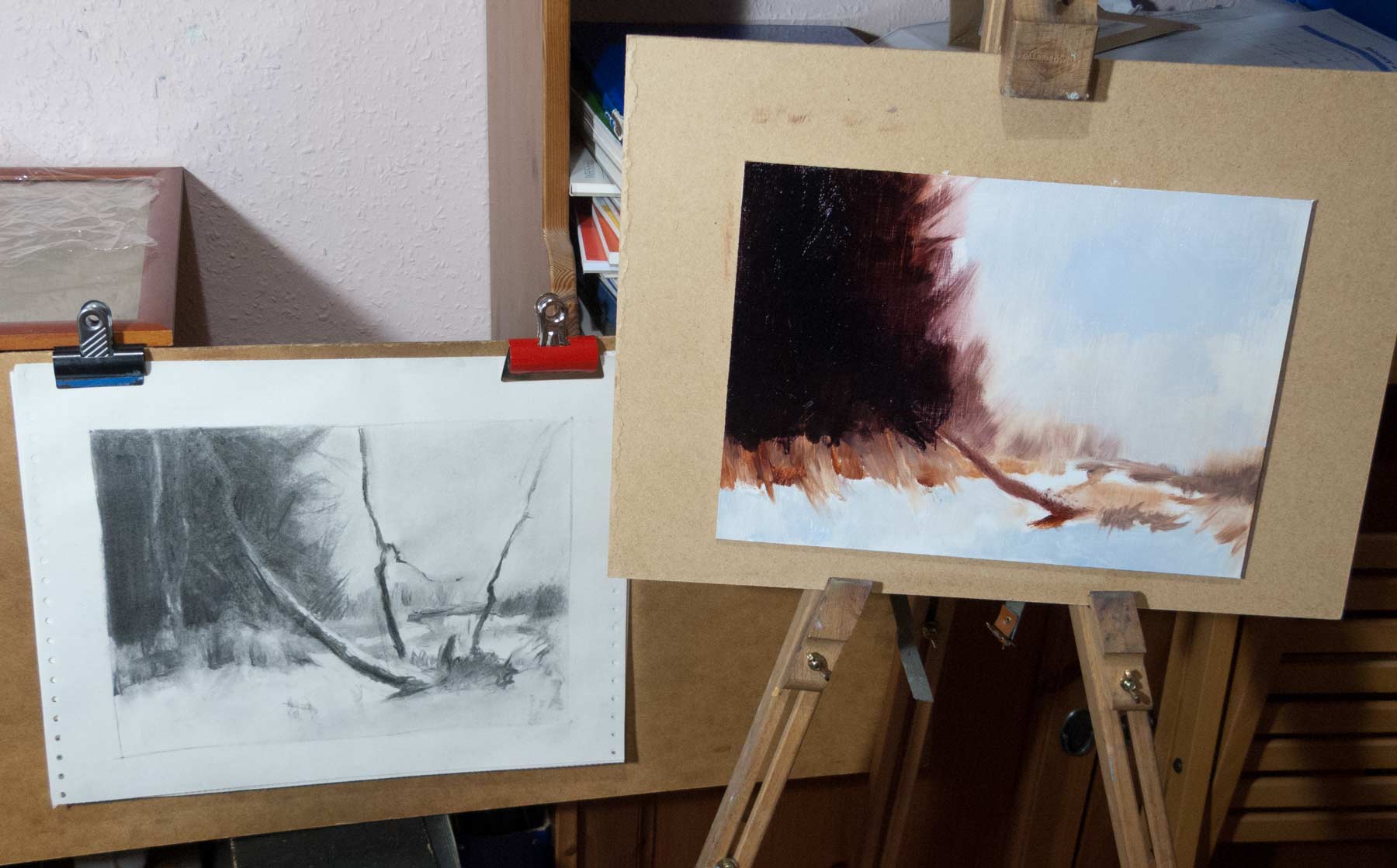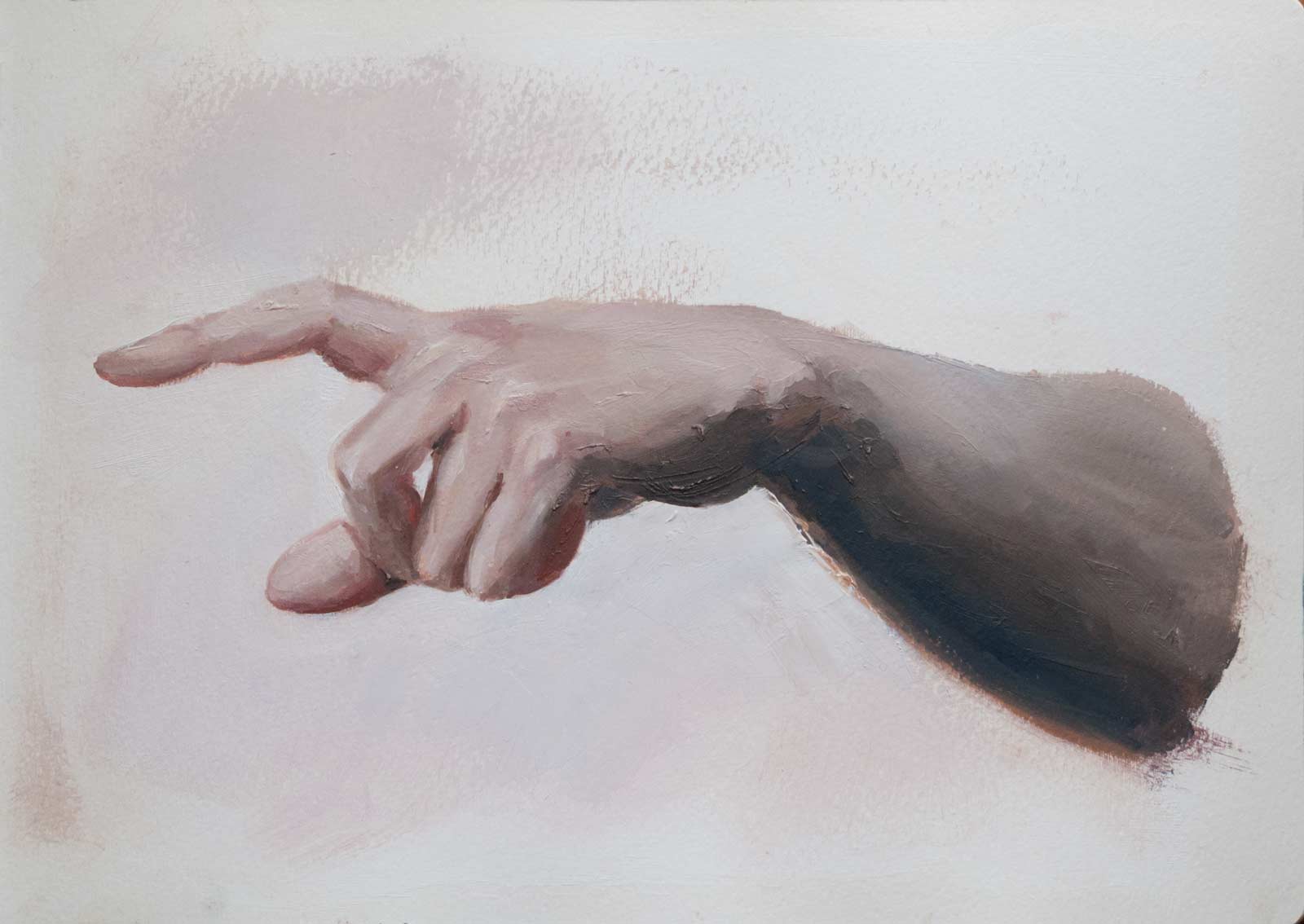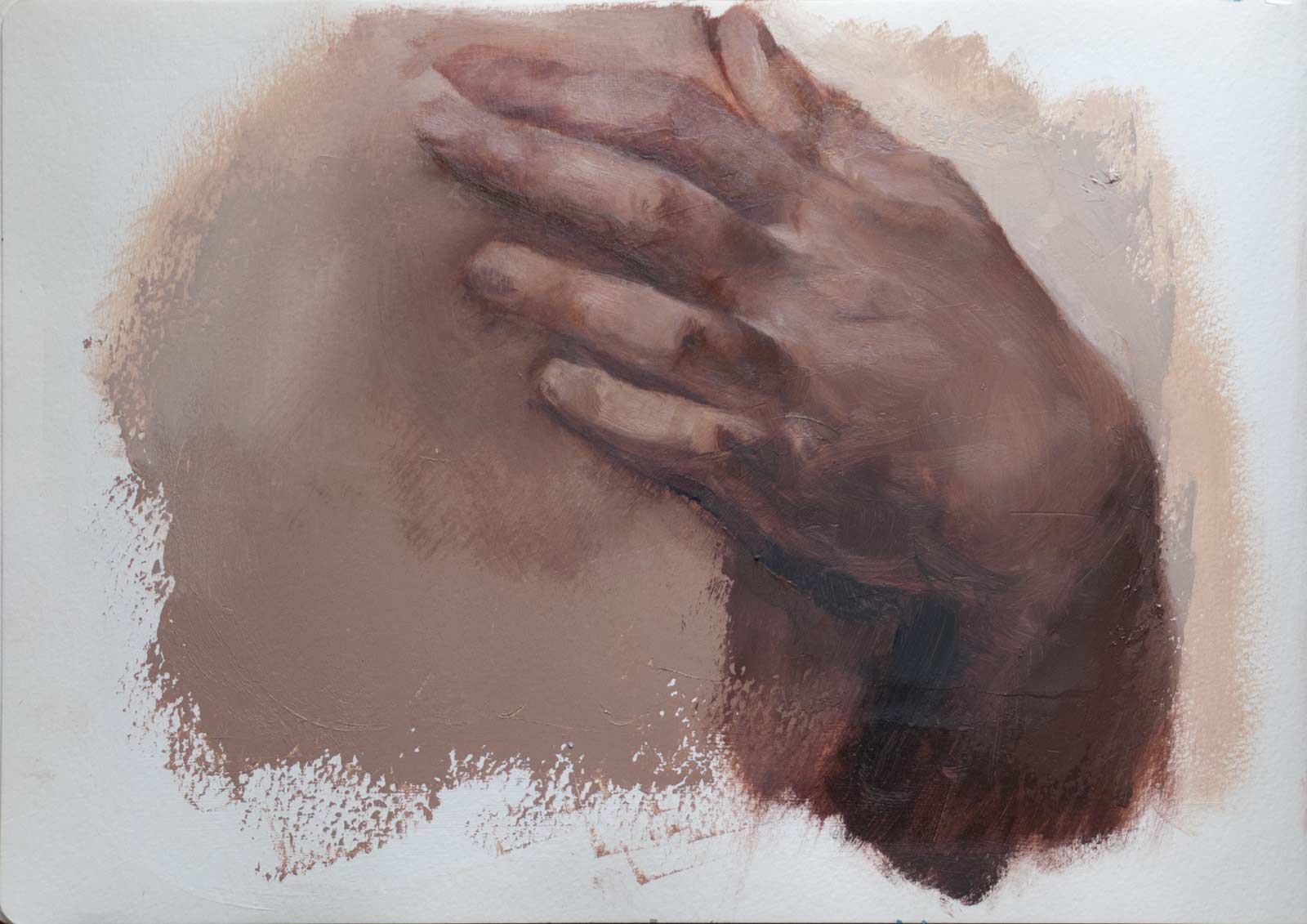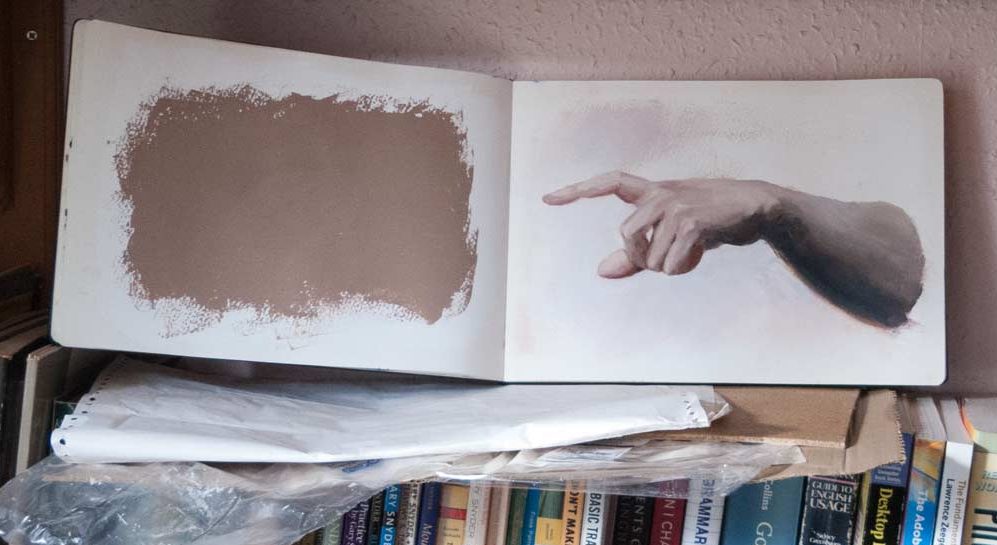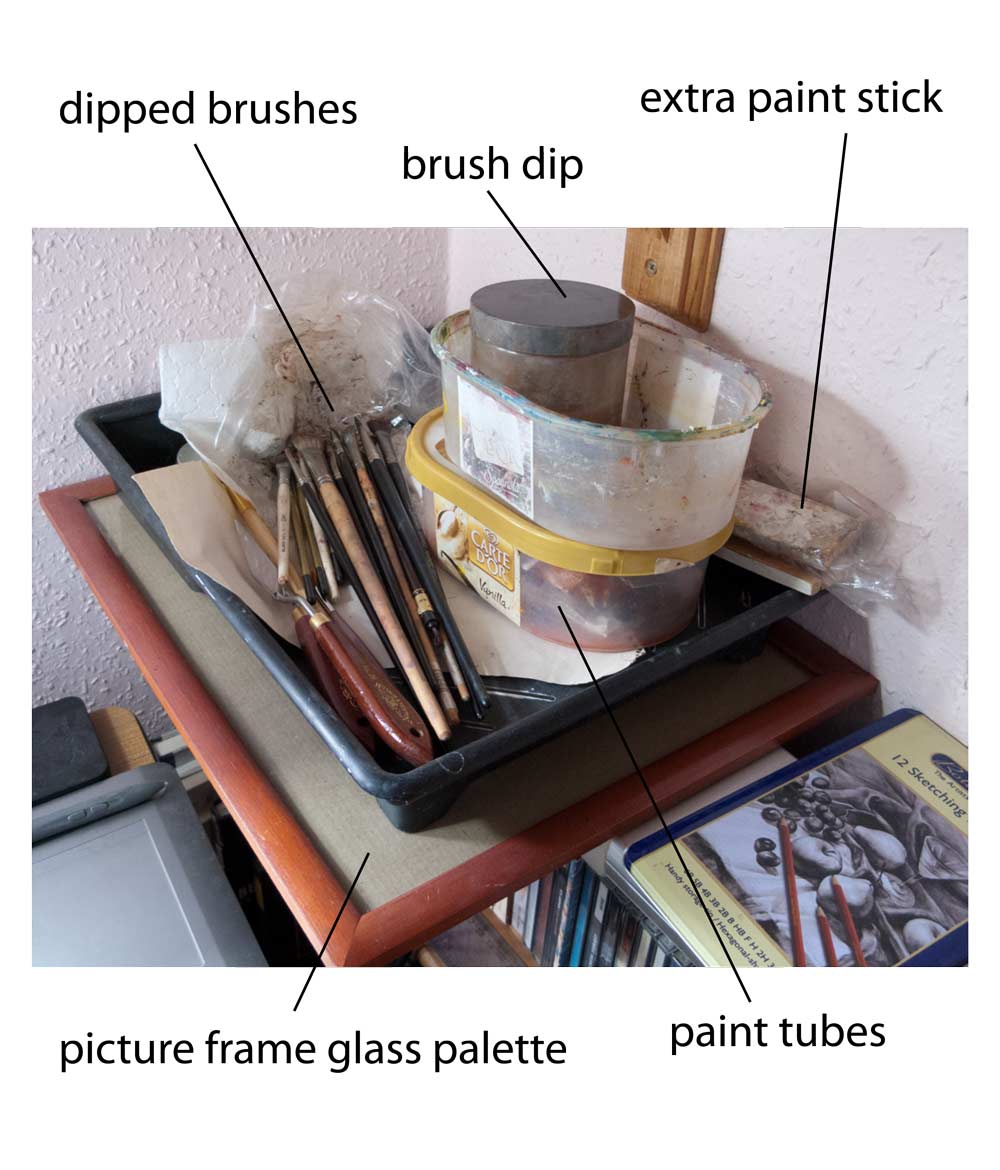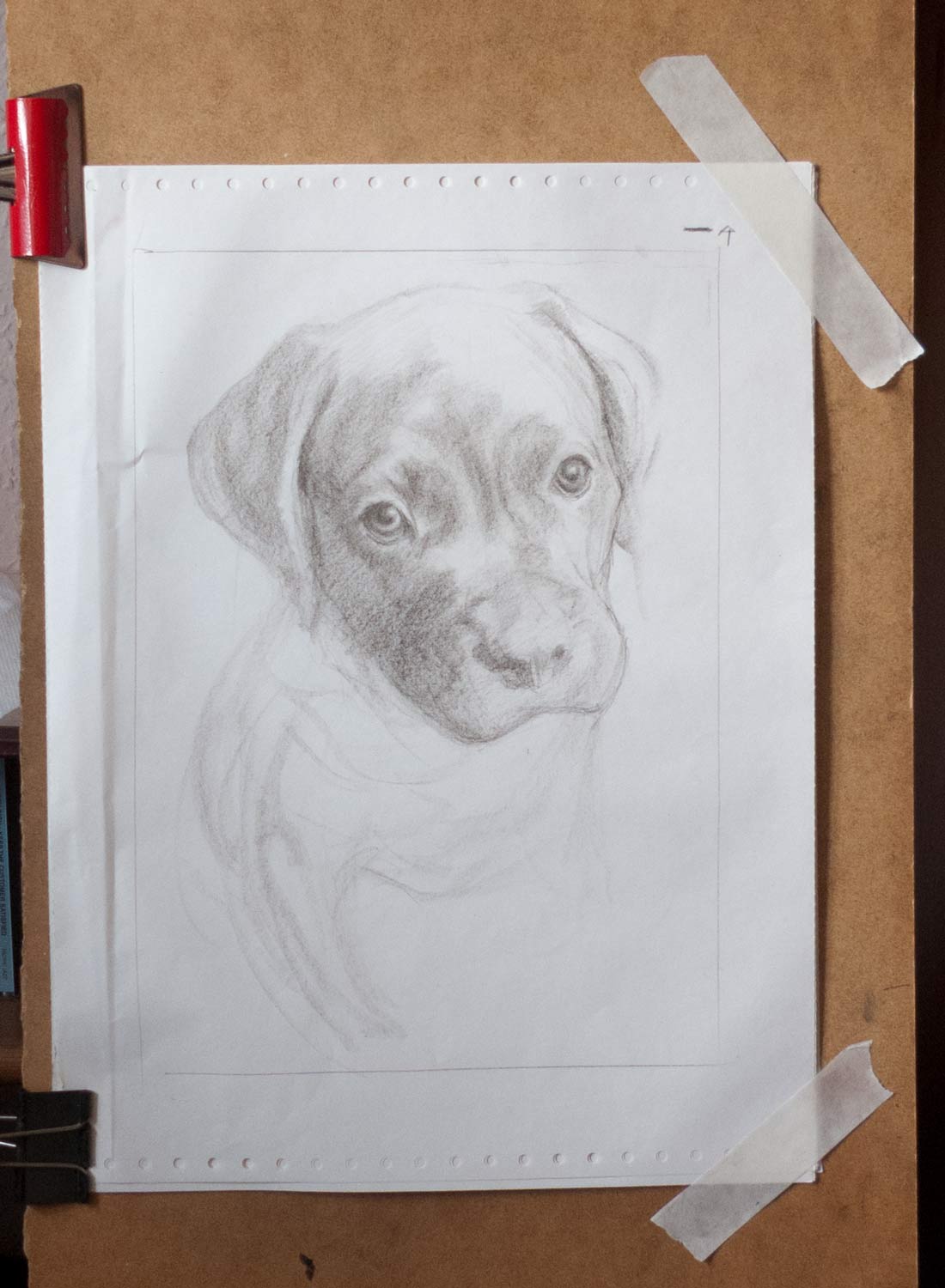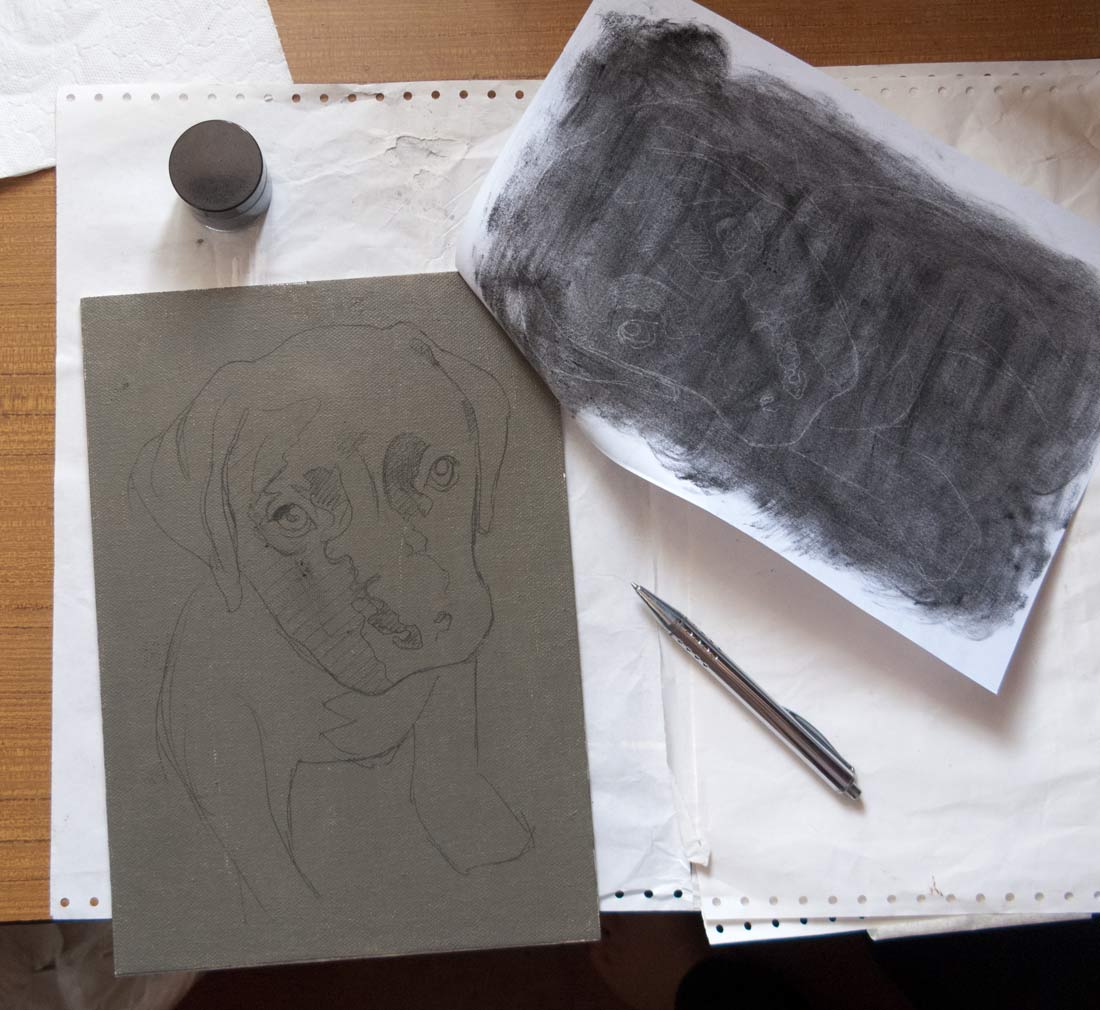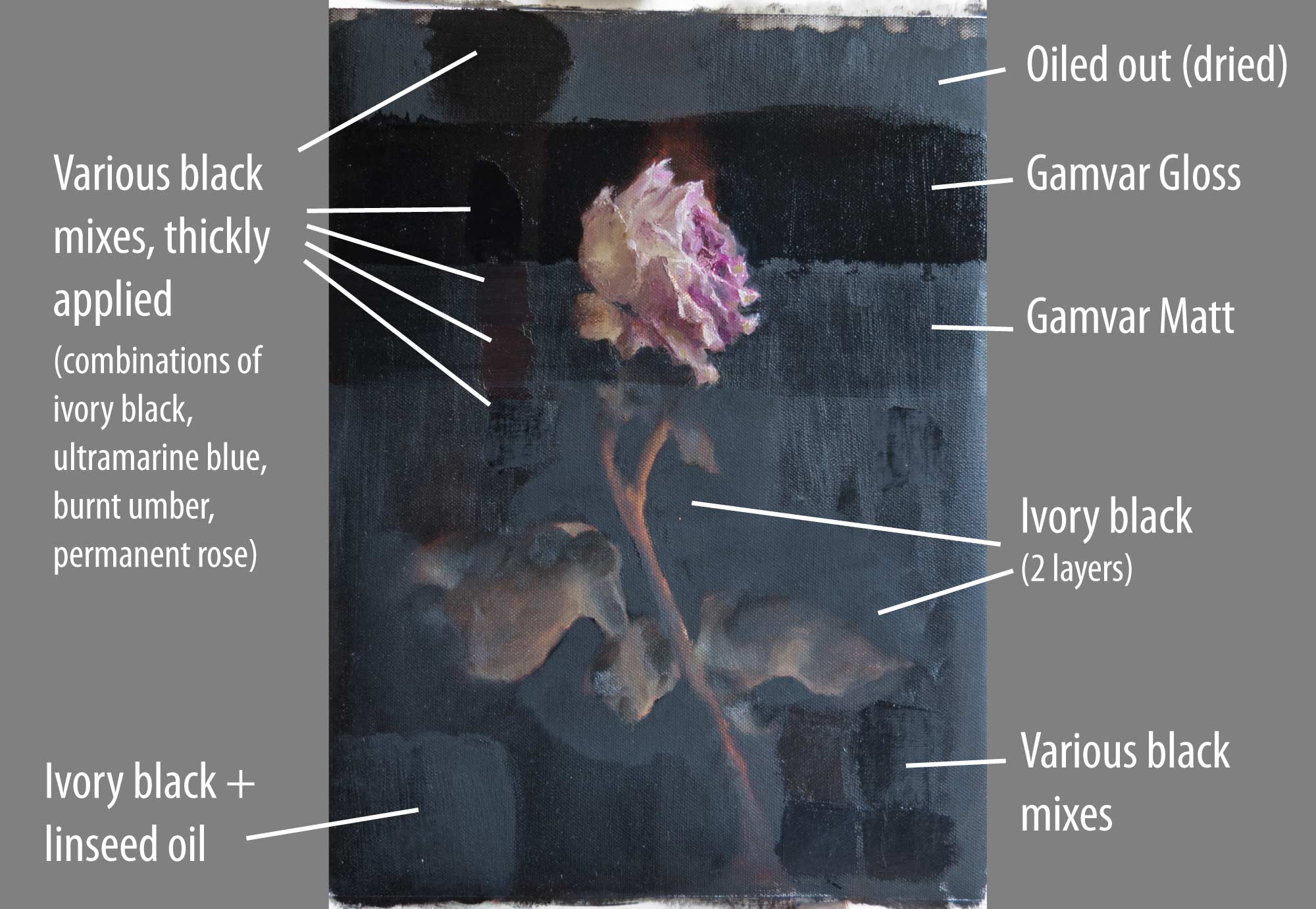A copy of a Peter Hayward painting from the 1960s. The title from the pictures found online said ‘Fabulous New York City Street Scene. Signed lower left.‘ This was a copy in acrylics, a request for the living room wall.
Size was important. My usual small paintings would not satisfy my commissioner. Luckily I had a largish (50 x 70 cm) canvas with a wooden backing frame from a craft store, a birthday gift from some years back that had been abandoned in the back of a cupboard. The great thing about acrylics is they’ll paint on just about anything, no special surface preparation required.
As this was meant to be a straightforward copy (possibly part of my training as an art forger) I had no qualms about doing a copy of the basic outlines using a drawing grid and a pencil transfer to canvas. The proportion of my canvas was slightly different to the original, so I had to add some extra sky in Photoshop, which didn’t seem to affect the composition too much. Though in writing this post and finding the links to the original auction pictures, I found some extra pictures of the original painting in its frame that I had missed which show slightly more of the left and right edges of the painting. It’s a small difference, but it takes away the slightly awkward tangent of the round sign on the right next to the side of the frame.
Too late now. It’s done and on the wall.
Another potential problem with copying paintings is matching the colour. By strange coincidence, some months back my wife had returned from a charity shop with a large framed print that she couldn’t resist, also by Peter Hayward. The picture looked oddly familiar. Then I realised it was the same print that had been on the dining room wall in my grandparent’s house. It was one of the first pictures I remember looking at as a child. The trees looked weird. Why were they bending over like that? And why did the tree trunks disappear off the bottom of the frame? At the age of five I couldn’t understand the perspective. But I remembered the woman with the red coat. I thought it was somewhere in France. But it was another New York street scene, probably Greenwich Village. This picture, which was larger than the one I was painting, allowed me to compare the colours and study the thick impasto technique that he used. Of course, I’m relying on the colours in the print being accurate, but they matched the ones of other prints online.
After it was painted, I asked in the NMA Discord if anyone recognised whereabouts in New York it was. Someone came back straight away: It was the Jefferson Market clock tower. I could explore the surrounding streets with Google Street View and eventually found this view from West 10th Street.
The red brick, the fire escapes, the cornices on the buildings all looked right. The tower in the distance looked too small, but how much of that is down to the wide angle lens on the street view camera and how much is due to Peter Hayward taking artistic liberties? As Stapleton Kearnes said, you can’t observe good design into a painting, meaning you’ll probably have to change the scene in front of you to make a good composition.
The hotel on the left has gone. Further research revealed that the large building next to the clock tower was the Women’s House of Detention, or The House of D, demolished in the 1970s and replaced with a garden. See this article for a comparison of then and now.
The scene in those old photos feels quite different from Peter Hayward’s view. I’m glad I didn’t see those pictures before I started painting. The whole exercise was an attempt to reverse-engineer what he painted back to what he was seeing (or wanted to see), and to reproduce his technique to some degree. He seemed to be painting fast, with thick impasto, large areas of pallet-knife-flattened paint, edges moved over with another layer of thick paint. My copy didn’t have that speed and generous paint application. Perhaps you had to be on the street, capturing the light before it changed, getting the paint down quickly and efficiently, to get that distinctive look of a Peter Hayward painting.


